Planting for Pollinators
Many of us enjoy the beauty of flowers in our backyard and community gardens. Growing native plants adds beauty and important habitats for wildlife, especially for pollinators. Planting for Pollinators will add more color to your yard and help your veggie garden. Even a small backyard garden can make a big difference. Gardening connects us to nature and helps us better understand how nature works.
Disclosure: As an Amazon affiliate, I earn from qualifying purchases at no extra cost to you. My blog contains other affiliate links as well for your convenience. To learn more, you may read my Disclosure Policy. Thank you for supporting my blog!
Who are the Pollinators?
Before we start talking about your pollinator garden let’s first talk about pollinators. Pollinators are responsible for assisting over 80% of the world’s flowering plants to reproduce. Without them, humans and wildlife wouldn’t have much to eat or look at! Pollinators include animals that assist plants with their reproduction. Wind and water also play a role in the pollination of many plants.
Pollinators are vital to maintaining healthy ecosystems. They are essential for plant reproduction, and produce genetic diversity in the plants they pollinate. The more diverse plants are, the better they can adapt to changes in the environment.
Insects and other animals pollinate one-third of the food we eat – all kinds of fruits, vegetables, grains, nuts, and beans. Even coffee and chocolate! The economic value of insect pollination worldwide has been estimated at $217 billion.
Best of all, pollinators such as hummingbirds, bees, and butterflies are beautiful and fascinating.
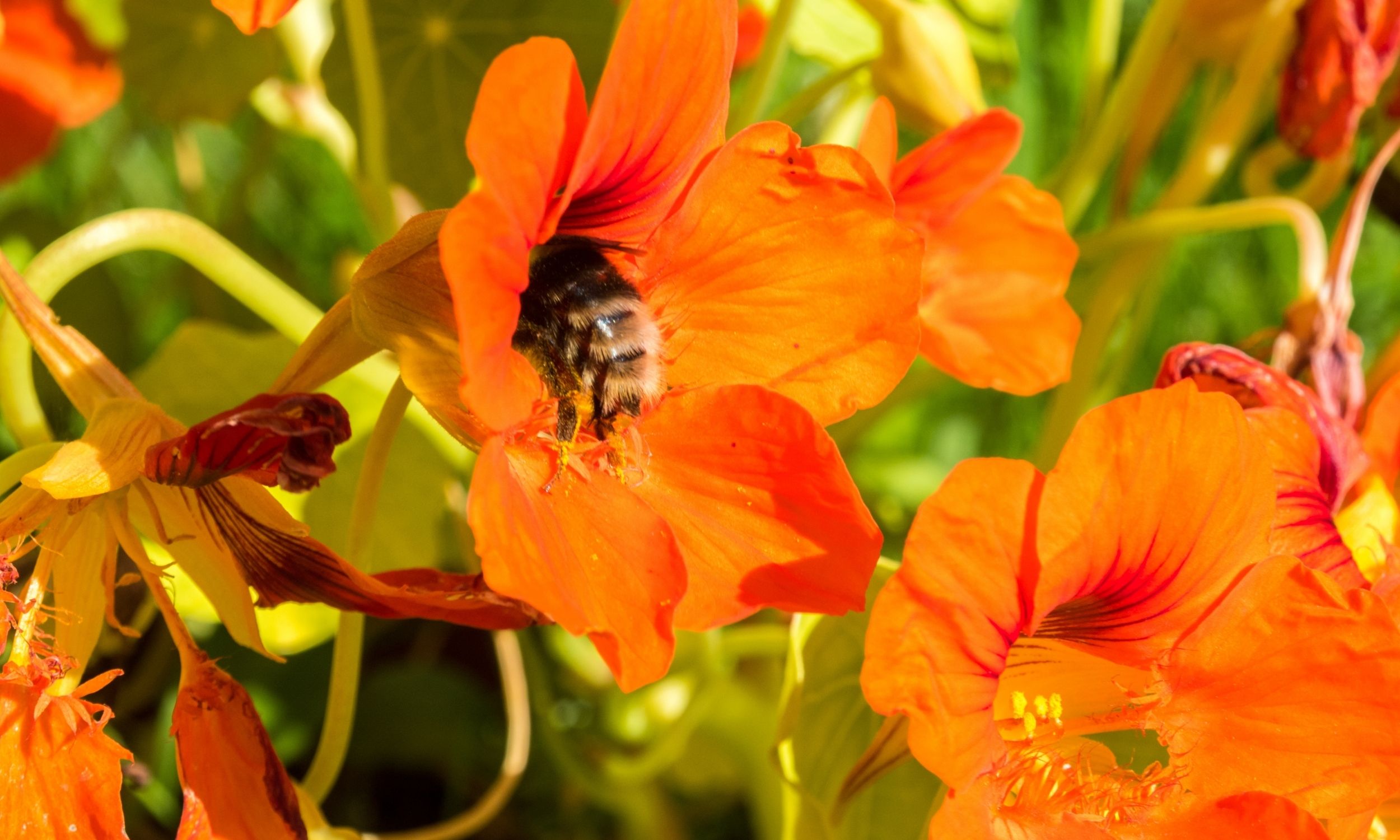
What do Pollinator Gardens Do?
Pollinator gardens support and maintain pollinators by supplying food in the form of pollen and nectar that will ensure that these important animals stay in the area to keep pollinating our crops for continued fruit and vegetable production.
Pollination gardens will introduce the basics of gardening and food systems to the gardner. These types of gardens can be almost any size and can use a wide variety of plants including flowers, shrubs and trees. Additionally, pollinator gardens are easier to establish and maintain than vegetable gardens, and can be supportive of future vegetable or butterfly gardens. Best of all, pollinator gardens benefit the ecosystem.
Follow this easy step-by-step guide to build your own pollinator garden and help ensure the future is filled with pollinators.
Planning your Pollinator Garden
As with any garden careful planning is a must for creating a successful pollinator garden. The steps and tips in this post will make sure your garden gets off to a great start.
Choosing a Location
The first thing to consider is a location. While flowering plants can grow in both shady and sunny locations, you want to think about whom you are planting the flowers for. Butterflies and other pollinators like the sun and some of their favorite wildflowers grow best in full sun.
Full sun is considered six or more hours per day. Partial sun is three to six hours in the sun and a few hours of shade. You will also want to note the timing of the sun. Midday sun and southern exposure will be much stronger than morning and evening light. It is also good to note that the sunnier your garden is the greater diversity of plants it will support.
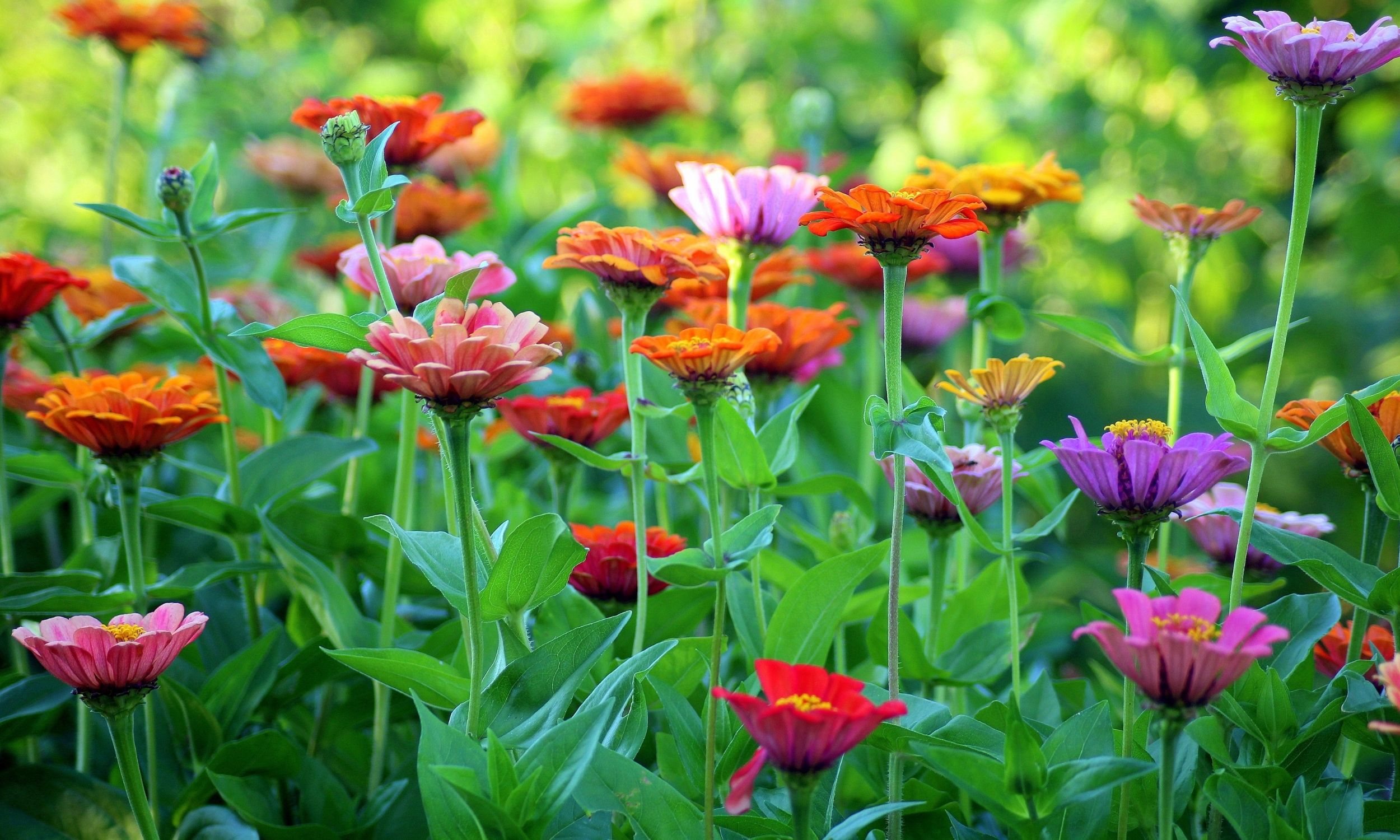
Identifying soil type
Take a look at your soil- is it sany and well drained or more clay-like and wet? To determine this you can turn over a test patch or check out a soil mapper for your county to learn more. Your soil type and the amount of sunlight it gets will help determine the kinds of plants you can grow.
Do not try to amend your soil with chemical fertilizers. Use only organic compounds, such as compost and mulch, to enhance your soil.
Choosing Plants
You are going to want Native Plants in your pollinator garden. Research which varieties of milkweed and wildflowers are native to your area and do well in your soil and sunlight conditions.
Native plants are the ideal choice because they require less maintenance and tend to be heartier. It’s essential to choose plants that have not been treated with pesticides, insecticides or neonicotinoids. You’ll also want to focus on selecting perennials to ensure your plants come back each year and don’t require a lot of maintenance.
Remember to think about more than just the summer months. Many pollinators like Mason bees need nectar in early spring. And migrating monarchs and hummingbirds need nectar into fall. Choosing plants that bloom at different times will help you create a bright and colorful garden that both you and the pollinators will love for months!
Seeds vs. plants
Once you’ve identified your plants, you’ll need to decide whether to use seeds or start with small plants. While both are good options, your choice will depend on your timeline and budget. Seeds are more economical, especially for larger gardens, but will require more time. If you’re using seeds, plan on dispersing them the fall or late winter ahead of your summer growing season. This gives the seeds time to germinate. Nursery-started plants cost more, but will generally give you a quick return on your investment and bring pollinators into your yard.
We have both in our pollinator garden. Many of the plants are mature enough now that they are producing seeds that we can share with friends and family.
Before we get into planting your seeds or seedlings here are something to remember/consider when starting your Pollinator Garden.
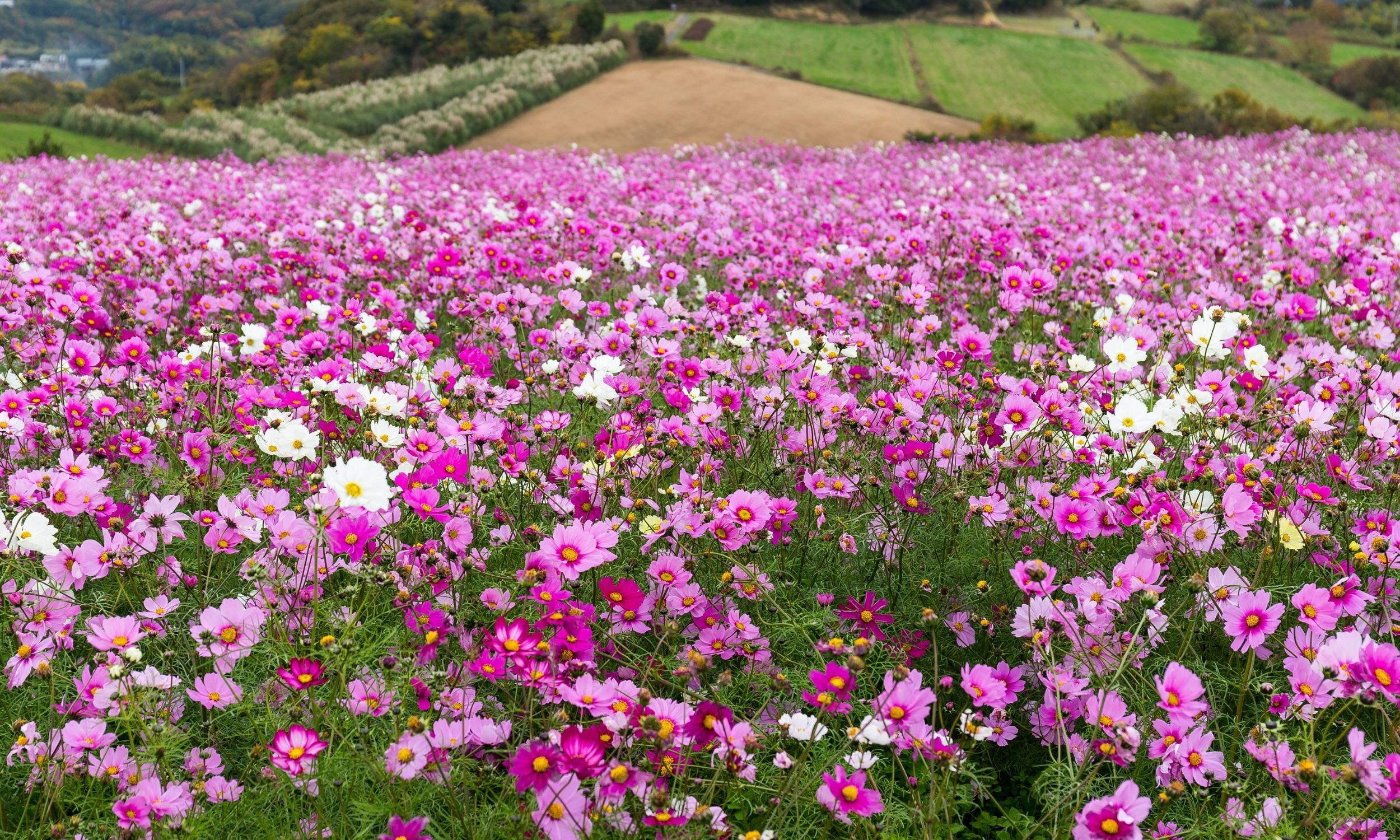
Things to Include in Your Garden
- Adult Food- a diverse selection of native plants with abundant pollen and nectar across the growing season, planted in groups for easy foraging
- Baby Food- host plants for butterflies and moth larvae
- Water- muddy spots where insects can access water and soil minerals, as well as a well-drained place for ground nesting.
- Habitat- nesting materials and other protective habitats such as hollow-stemmed plants, decaying wood, leaves, grasses, and bare soil, to help support the entire life cycle of threatened pollinators
- Protection- use only plants grown in chemical-free environments. And spread the word tell friends and neighbors not to use pesticides or to purchase plants grown with harmful chemicals.
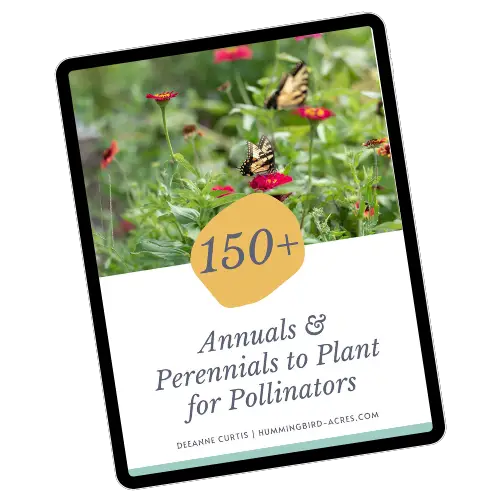
Grab my free
150 Plants for Pollinators
Plant These to Attract Butterflies and Pollinators to Your Garden!
Enter your name & email so we can send you your FREE Guide.
[convertkit form=5600487]
Planting your Pollinator Garden
When you are ready to plant you will need your seeds/plants and some gardening tools. You will also want some extra soil, compost and mulch.
Prepping the Garden
If you are adding a pollinator garden to your existing lawn, you’ll need to remove the grass and current plant cover. Turn your soil to loosen it up.
If you’re planning on using raised beds or containers, there are a lot of pre-made options available, as well as simple designs to build your own. No matter where you decide to plant your garden, you’ll want to add nutrient-rich compost or soil to improve the success of your garden.
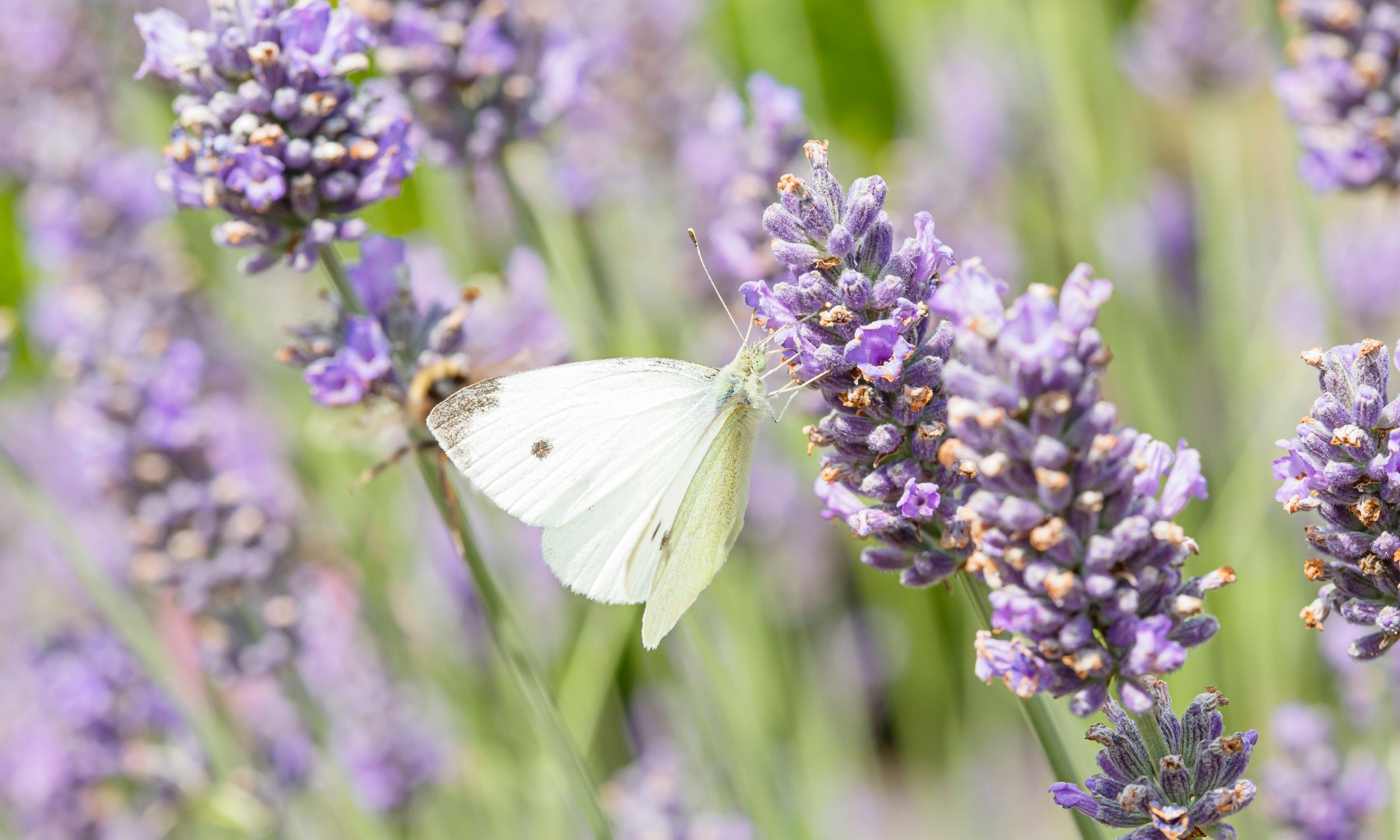
Planting Your Flowers
When you are using seeds, keep in mind that they will need time to germinate, so fall and late winter are ideal times to get started. In the fall spread seeds in the garden and cover them with soil. In the late winter, scatter seeds over the snow. The sun will heat up the seeds and help anchor them into the snow. The melted snow provides moisture that will help the seeds germinate.
If you are starting with small plants, make sure you follow frost guidance to avoid putting your plants in too early. Dig holes just big enough for the root system, then cover and reinforce the roots with soil or compost.
Wait, Watch, Water & Weed
It may take some time, but you will eventually see butterflies and other pollinators enjoying your garden. It took two years for us to see monarch butterflies and we still don’t have many bees.
Make sure you weed and water your garden to keep it healthy. We have a soaker hose on a timer to make sure we don’t forget.
Keep in mind that it may take a couple of seasons for milkweed to start producing flowers.
Garden Designs
If you are looking for some inspiration for your pollinator garden check out these Pollinator Garden Designs.
There you have it, how to Plant for Pollinators in your backyard. Start small, you can always add more. Before you know it you will start to see those pollinators buzzing around.
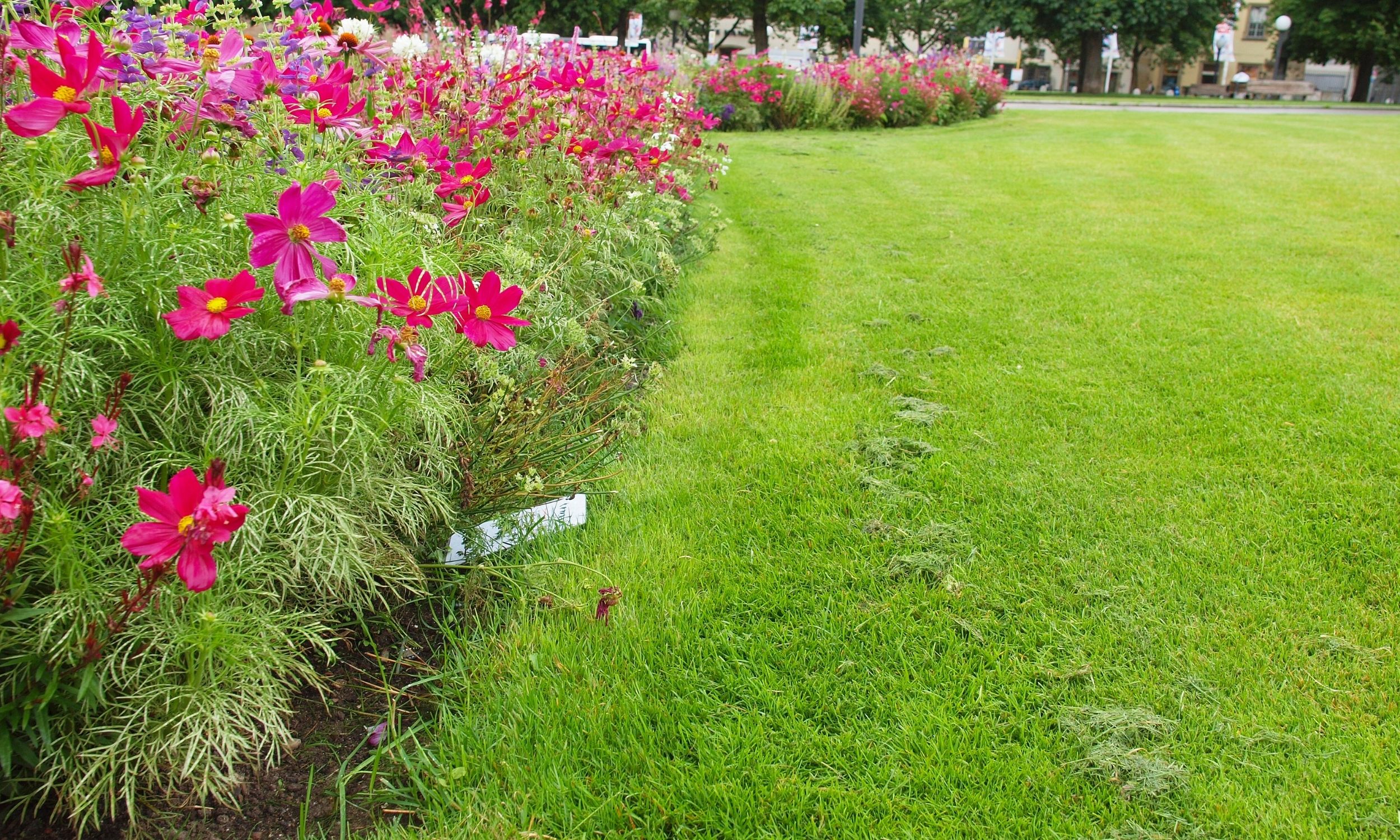
You may also enjoy these related articles:
- Grow Butterfly Weed for a Beautiful Butterfly Garden
- Plants for Butterfly Gardens: Attract More Butterflies to Your Yard with These Beautiful Flowers
- Plan Your Own Butterfly Garden: A Beginner’s Guide
Did you enjoy this article? Want to hear more? Stay in touch! Sign up below to receive weekly tips and inspiration for your homestead.
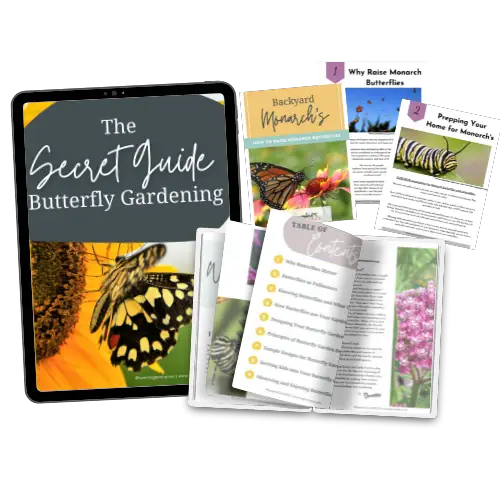
Get our
Secret Guide to Butterfly Gardening
Everything you need to start and maintain a vibrant and colorful butterfly garden.
